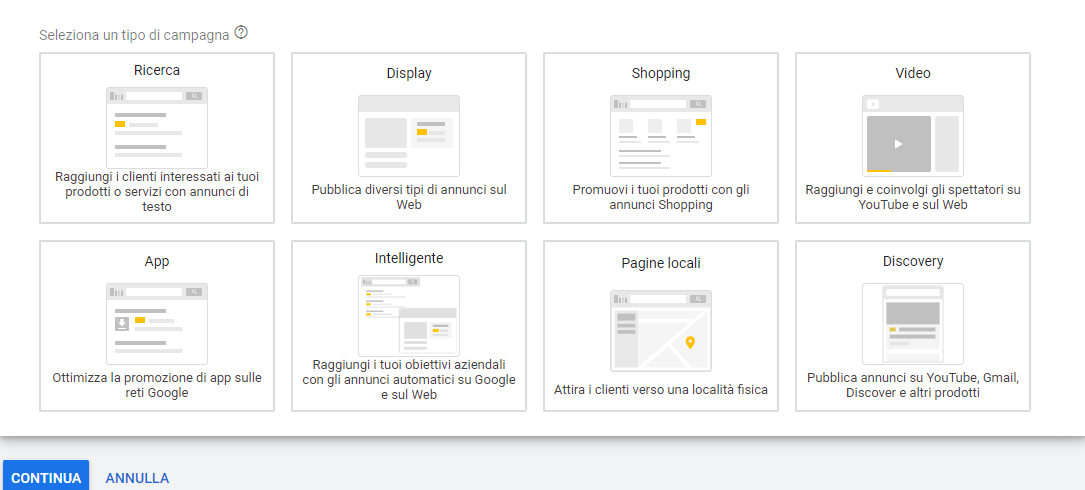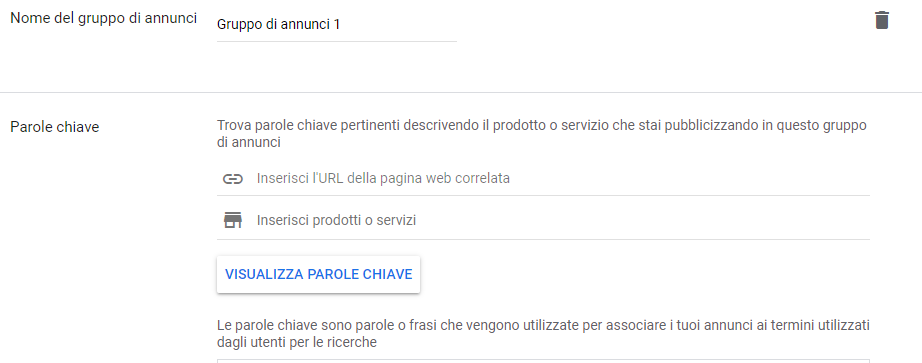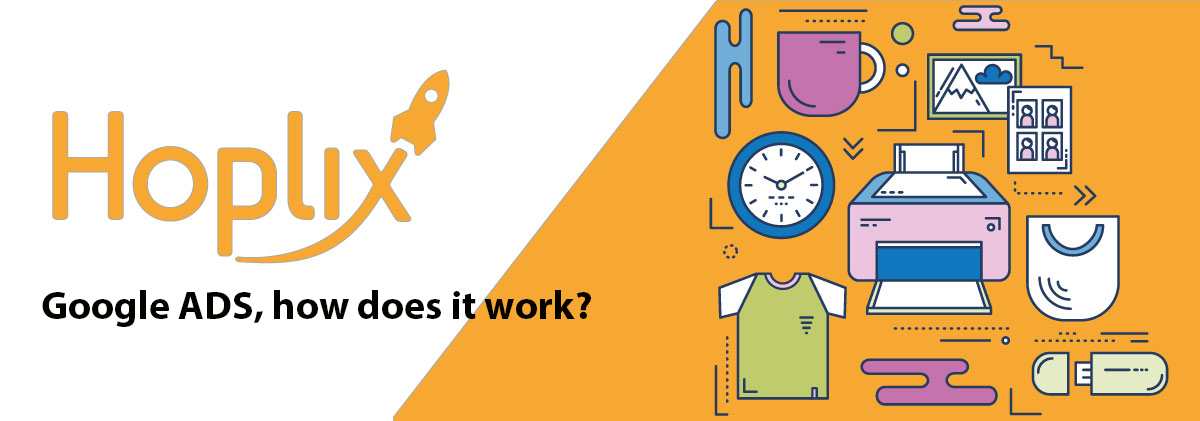 Google Ads, formerly Google AdWords, is the main platform used to advertise on search engines. Thanks to Google’s enormous popularity, it is possible to reach a large number of users who are currently using it for their searches, from whatever device they are connected to. With Google Ads, however, it is not only Google users that are intercepted: the coverage of one’s own ads, in fact, can also be extended to sites owned by Google, such as YouTube, and to partners that adhere to the Google AdSense programme, hosting advertising on their own websites.
Google Ads, formerly Google AdWords, is the main platform used to advertise on search engines. Thanks to Google’s enormous popularity, it is possible to reach a large number of users who are currently using it for their searches, from whatever device they are connected to. With Google Ads, however, it is not only Google users that are intercepted: the coverage of one’s own ads, in fact, can also be extended to sites owned by Google, such as YouTube, and to partners that adhere to the Google AdSense programme, hosting advertising on their own websites.
The platform provides a number of features to improve the performance of ads and make them more useful and relevant to the searches of potential customers. Among these, we can mention a whole series of options on targeting, such as segmenting by age, location, language, interests, sites visited, and so on. We can also mention the large amount of data available on the campaigns carried out (number of impressions, number of clicks, amount spent, number of conversions achieved, interaction rate, and much more). The use of certain functionalities also depends on the type of company and the advertising objectives set.
How much does it cost to advertise with Google?
There is no set price for advertising with Google Ads. The answer is: it depends. There are several factors. First of all, common sense. Then you also have to consider the resources you have available to invest, the competition and the competitiveness of the keywords you want to buy. Therefore, before setting up a campaign, you need to plan your investment by estimating the budget to be allocated and the expected performance in terms of impressions, clicks and conversions. This is where the keyword planning tool provided by the Google Ads platform comes in handy. From here we can get an estimate of how much an advertising campaign with Google would cost.
It is also necessary to consider the fee of the SEM consultant who manages the campaign, which can be defined on the basis of a monthly fee or for the entire project, or alternatively on the basis of a percentage of the total budget to be invested.
And by the way, if you are wondering, there is no way to advertise on Google for free. If you are looking for a way to get on the first page more or less spontaneously, you should then do SEO on your website, optimising it in such a way as to make the browsing experience for users simple and immediate (and easier for search engines to crawl and understand). There is therefore no method to place an ad on Google for free.
How a company can set up an advertising campaign on Google Ads
Now let’s see how to set up an advertising campaign on Ads. Assuming that a local company wants to set up a campaign, I will list below the main functionalities that can be used to advertise locally, even if we are online.
Setting the Network and Targets


Starting with the campaign settings, the local business will first choose where its ads are to be published. The most common option is “Search Network”, i.e. the ads are published in Google search results; for greater visibility, one could decide to also publish on the Display Network, i.e. partner websites affiliated through Google AdSense and individually choose portals that have wide local coverage (e.g. local newspapers). There are also other more specific and targeted types of campaign: Shopping campaigns to promote the products of your own e-commerce, video campaigns for YouTube ads, and universal App campaigns to promote your own app.
Let’s say the company wants to reach potential customers searching on Google and selects the “Search Network” option (you can always add the Display Network option later). In addition, for the sake of simplicity, I have set up the campaign without choosing any targets; this functionality is similar to that of Facebook Ads. Then the company can select the results they wish to obtain from website visits, phone calls or app downloads (I chose the former).
Target Location, Type of Offer and Campaign Budget
After naming the campaign, the company will choose its target city (or province) as the target location; later on we will see where and to whom to show the ads. Assuming that the language is Italian, the company will set the type of offer to be paid for the ads and the daily budget, as in the image above.
There are several bidding options, which are mainly grouped into manual bidding strategies and flexible bidding strategies. The latter are more advanced types of bidding and require more experience and knowledge of the advertising platform. To explain them one by one requires more time and space than can be given in this article. Perhaps I will talk about them in some exclusive content in the future.
Having said that, for those who are just starting out, or in any case to begin a new campaign, I recommend setting up a manual bidding strategy based on CPC, Cost per Click. As far as the budget is concerned, you will select the “Standard” publication method. This publication distributes the budget evenly over time, as opposed to “Accelerated” in which the budget is spent more quickly and is exhausted before time.

Ad extensions
Next, ‘ad extensions’ – additional information to make the ads more effective – are applied to the ads. The ideal ad extensions for a local business are the location extension, which combines the address of the business with the ad; the sitelink extensions, which allow you to insert additional links to various sections of the website; the call extension, to display the clickable phone number from the ad itself; user reviews and structured snippets, which highlight specific aspects of the products or services offered (for a hotel, for example, you might decide to display free Wi-Fi, room service, swimming pool). Below you can find some example images of ad extensions.

The location option

After setting the start and end date of the campaign and the times when the ads will be active, the business will select the location option, i.e. where to show the ads. For a business that operates locally, it is advisable to select the “People in target location” option. This option will only show ads to people who are physically in the target location and not to people who show interest in the location but are not physically there. It should also exclude ‘people who are in your excluded locations or show interest in them’.
In addition, the company that wants to achieve tangible results, such as bookings or orders, will set up conversion tracking on its website. In this way they will be able to track any conversions coming from the advertising campaign.
Creating the first ad group and choosing keywords

On the next screen we will move on to setting up the ad group. We will set a Maximum Cost per Click offer that we want to offer for each ad. We will also choose the keywords according to the type of ad to be published and the product or service to be sponsored. Based on the address of your website and the product/service, the platform will suggest a series of keywords to be included in the ad group and will estimate clicks, daily costs and average CPC for the group.
The choice of the maximum CPC and the setting of the keywords must be done very carefully. The cost-per-click offer corresponds to the value of a single click; the keywords, on the other hand, relate to what you want to promote. In addition, you must take into account the keyword matching options, i.e. the user searches in which the ads are activated.
In the image above, the keywords chosen are generic matches. With this option, the ad would be activated for the above terms and for similar searches, synonyms, spelling mistakes. I strongly advise against this option precisely because the ads would certainly be displayed for keywords that have nothing to do with your business. We would be wasting budget unnecessarily. And considering the case of a local business with limited resources, this would be very annoying. Imagine, for example, a 3-star hotel in Palermo that chooses the keyword “hotel palermo” as a generic match: its ad would also be displayed on “b&b palermo” and “hotel palermo 5 stars”.
Other more specific and efficient options exist:
- Modified generic matching (by adding the + sign to the single term): shows listings only for searches to which the sign has been prefixed and similar variants;
- Phrase matching (by adding inverted commas): shows listings in searches matching the phrase and similar variants, without adding other terms within the phrase;
- Exact match (by putting the keyword between square brackets): shows listings in searches matching only the exact term and some variants as long as the meaning is always identical.
Creating the text announcement
You will then choose the creation of the ad group and a text ad. The ad will consist of three headlines of no more than 30 characters, two lines of description of no more than 90 characters and a destination link. You can then create new text ads (or illustrated and video ads if you have activated the Display Network). We can edit add or remove keywords, or alternatively add a different positioning method, such as web portals affiliated to the Google network. Before publishing the entire campaign, you will see a summarised screen with all the setting details, useful for checking that all the settings are correct.
To conclude
Google Ads is an excellent tool for reaching your customers effectively and cost-effectively, even for local businesses. Unlike advertising on social networks, such as Facebook Ads, Google Ads intercept people at the exact moment when they are actively searching for products and services related to the companies they are advertising.
As we have seen, it is not that challenging to set up an advertisement on Google Ads. However, setting up a campaign strategically, managing it and monitoring it is not easy. Companies that are unable to manage their campaigns effectively can rely on consultants who can do this professionally.
In another article, I will deal with Twitter’s advertising platform, Twitter Ads. I have also written a guide to advertising on LinkedIn.






